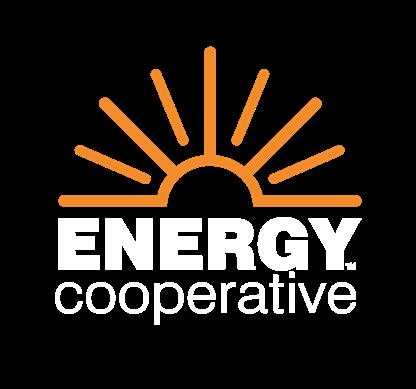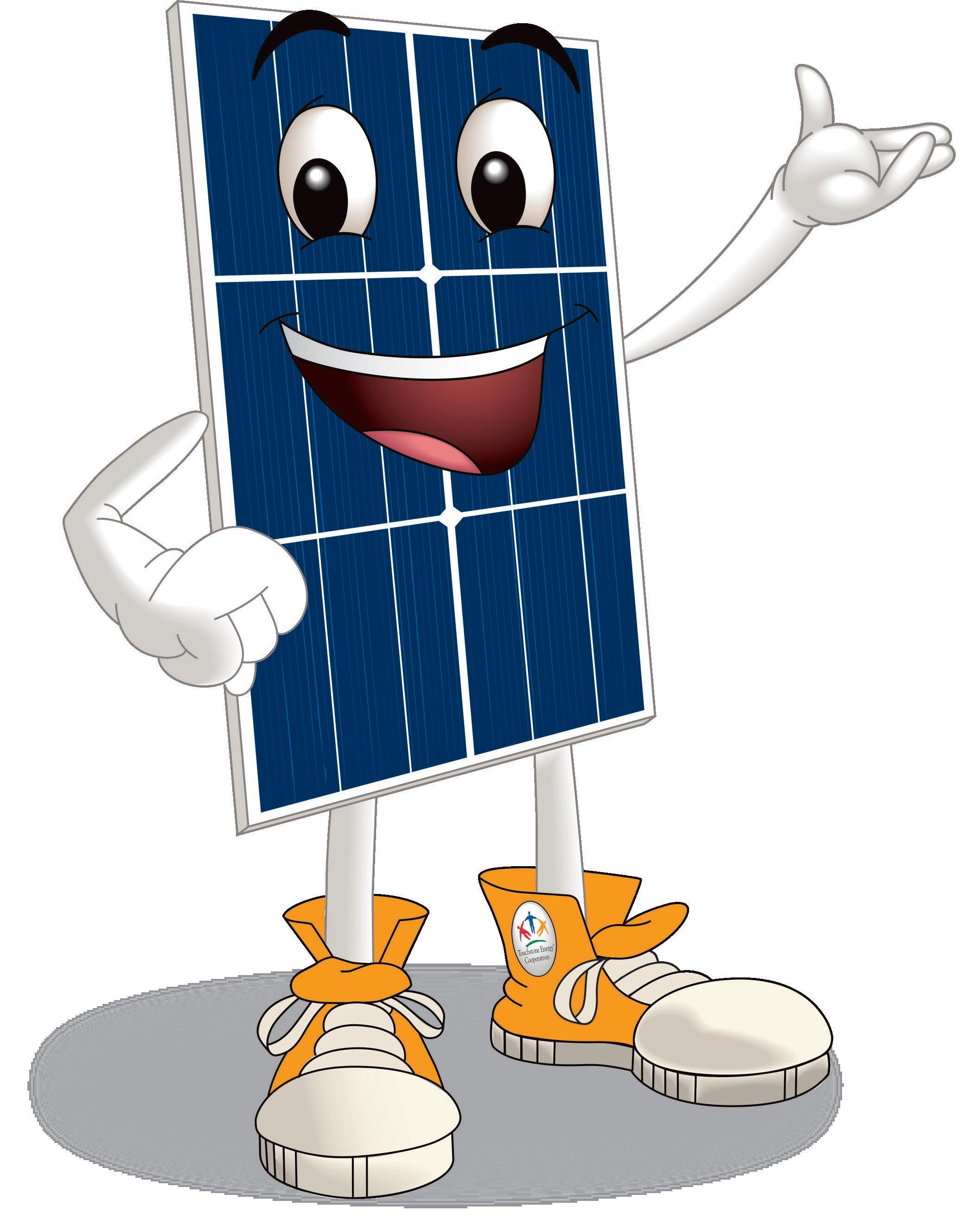



















After working in the utility business for almost 30 years, l still marvel at how our interconnected electric network, which we commonly call "the grid", works on a daily basis. The grid has taken equal parts of engineering, ingenuity and hard work to design, build and sustain a network that makes electricity available every hour of every day, regardless of the temperature. Please read more about the essential workings of the power grid in the article on page 4
Unfortunately, we can no longer take 24/7 electricity availability for granted. Over the past several years, we have experienced a tightening of the balance between supply and demand that is critical to the function of our power grid. Since 2020, the electricity supply has proved inadequate each time a large area of the country has experienced extreme temperatures for more than a day or two. In times of unmet demand, the regional grid operators shut off power to consumers to keep the system from crashing.
Across the country, we are facing the disorderly retirement of baseload coal and nuclear power plants because of poorly conceived and harmful energy policies that include:
Overreaching and excessive environmental regulations that result in unnecessarily high costs while providing only minimal ecological benefits.
Poorly designed market rules that under-compensate reliable baseload power plants that supply a steady and controllable output while over-compensating less reliable and intermittent sources.

Unreasonable goals and deadlines to achieve more significant reductions in carbon emissions from electricity providers, even though the U.S. electric sector has cut CO2 emissions by 36% since 2005 while producing nearly 5% more electricity.
Organizations charged with ensuring a reliable electric grid, such as the North American Electric Reliability Corporation (nerc.com) and the PJM Interconnection (pjm.com), have each independently published reports that outline concerning trends that are resulting in increased reliability risks.
While the mission of your cooperative and our commitment to you remains the same, the harsh reality is that it is getting more and more challenging to bring you safe, reliable, affordable electricity. Therefore, we need changes in the policies that affect our electric reliability and supply.
 Todd Ware
Flintridge Substation
Todd Ware
Flintridge Substation
Again in late March and early April, a series of powerful storms swept through Ohio — this time bringing gale-force winds that brought down trees, snapped utility poles, and pulled wide stretches of power line to the ground, causing electricity to stop flowing to homes and businesses around the state.
Line crews from Ohio electric cooperatives, as they do, worked diligently, for long hours and several days, to reconnect those co-op-served portions of the power grid that had gone offline.
Scenes like that, when they happen, are highly visible events; that visibility may even make them seem common, especially during storm season. In reality, however, power is available to electric meters served by Ohio electric cooperatives more than 99.9% of the time, according to Ben Wilson, director of power delivery engineering at Buckeye Power, which generates and supplies the electricity co-ops distribute to their members.
For the vast majority of time, no one really thinks about electricity or where it comes from, or how it gets to that light bulb. It’s only during that fraction of
a percent of the hours in a year when power is NOT available that the grid comes to public attention.
In the United States, the electricity industry has a generating capacity of 1.1 million megawatts, serving up electricity to nearly every home and business — including over a million Ohioans and 42 million people across the country who are served by electric cooperatives.
“In short, the electricity grid is the system and equipment required to get electric power from where it’s generated to where it’s used,” says Tom Schmidt, principal planning engineer at Buckeye Power. “It’s a vast, sprawling, yet interconnected network that has provided this essential public good for over 100 years.”

It’s that interconnectedness that makes it a grid.
“You can think of the power grid like our system of roadways.” Schmidt says. “Each individual part of each system is designed and built to handle a certain volume — cars and trucks on the highway system, electricity on the grid.”
Like highway construction projects, transmission power line improvements can be slow, unsightly, and costly. But once completed, these investments strengthen the transmission grid by adding redundancy — increasing reliability and resilience for many decades.
Thomas Edison created the first power grid in 1882 and other than a change from direct current to alternating current, the technology is basically the same because the physics is the same: Power producers must ensure that the amount of electricity generated at power plants and put into the grid precisely matches the amount of electricity used by consumers at any given moment. An imbalance can cause anything from widespread blackouts to damaged equipment.

The electricity grid can be compared with our system of roads.
Extra-high-voltage transmission lines, 300 kV (300,000 volts) to 1,000 kV: Compares to an interstate highway (high volume, high capacity); carries enough power for 100,000 to 500,000 homes.
Transmission lines, 100 kV to 300 kV: compares to a US highway (not quite the capacity of an interstate); 10,000 to 100,000 homes.
Sub-transmission lines, 20kV to 100 kV: closer to a state highway (still lots of volume); 1,000 to 10,000 homes.
3-phase distribution, 4 kV to 40 kV: more like a city street in terms of volume; 100 to 1,000 homes.
Single-phase distribution, 2 kV to 15 kV; more like a smaller residential street; 10 to 100 homes.
Distribution service, 120 to 240 volts; the lines that come from the street to your house, compares to your driveway; 1 to 10 homes.
plants, from the grid, less-dependable sources of electricity were unable to keep up with consumers’ demand.
Rolling blackouts are currently necessary to avert a larger-scale grid catastrophe; notably in Texas in February 2021, at least 246 people died during Winter Storm Uri and the resulting supply shortage.
New and emerging technologies continue to optimize grid performance, effectiveness, and reliability. Most of Ohio’s electric cooperatives, for example, continually modernize their distribution systems using “smart grid” technology: controls, computers, automation, telecommunication, and smart meters that work together to dynamically respond to quickly changing conditions.
“The grid is greater than 99.9% reliable, and we are always working to put more 9s after that decimal,” Wilson says. “All outages hurt, even when they are rare.”

For the year ended December 31, 2022, the Board of Directors engaged bhm cpa group, inc. to perform an audit of the cooperatives’ books and records. The bhm group has extensive experience in auditing both utilities and cooperatives. On March 22, 2023, bhm issued the audit report for the year ended December 31, 2022. The audit report contained an unmodified opinion, which in accounting terms is a clean opinion from the auditor.
As of December 31, 2022 your cooperative had total assets of $362 million, which includes $281 million in net plant assets. The cooperatives invested $33.1 million in new plant assets throughout the year. At the end of the year, the company had $41 million of patronage capital in other cooperatives, including Buckeye Power and Cooperative Finance Corporation (CFC). Included in total assets was over $2.4 million in cash and short-term investments. Total liabilities were $280.6 million as of year-end.
The cooperative has equity of $81.4 million as of December 31, 2022. Equity as a percentage of assets for the combined entities has grown to 22.49 percent.
The Energy Cooperative serves approximately 70,000 meters. During 2022, we paid out approximately $8.3 million in taxes. The cooperative paid $154,000 in patronage capital credits to estates and $673,000 in general retirements to electric members.
If you have questions about this financial report, please contact the office at 740-344-2102.
In 2022, total revenues for the cooperatives were approximately $157.4 million and patronage capital received from other cooperatives was $2.7 million. Total operating expenses for the year were $151.4 million of which $90.6 million was for purchased energy. The net margin for the consolidated group was $8.6 million.
Consolidated comprehensive income for 2022 was $10.3 million. Comprehensive income is calculated by adding net margin and unrealized gains/losses on postretirement benefits plans. Comprehensive income by entity for the year are as follows:

Licking Rural Electric - $4,600,000
National Gas & Oil - $4,700,000
NGO Transmission - $422,000
NGO Development – $413,000



NGO Propane - $243,000


Natural gas or propane stoves have become a popular choice for homeowners and chefs alike, and for good reason. They offer precise temperature control and adjustments. This makes them ideal for cooking delicate dishes, such as sauces and soups –where even a slight temperature variation can make a significant difference to the final product.

Gas stoves are very energy efficient. According to the U.S. Department of Energy, gas stoves use about a third less energy than electric stoves. The cost of installing a gas stove may be higher than an electric stove, but there are often lower costs for the operation and maintenance costs of it. The long lifespan of gas stoves makes them a worthwhile investment.
You should also have a working carbon monoxide detector in your home and know how to recognize a natural gas leak. We odorize our natural gas and propane with Mercaptan, a strong smell like rotten eggs, to alert you of a leak. If you suspect a gas leak, leave the area at once. Call 911 then call us at 740-344-2102.
There have been recent concerns about the impact of gas stoves on human health. One study suggested that gas stoves release nitrogen dioxide in the air causing respiratory problems and other health issues. It is worth noting that the Environmental Protection Agency (EPA) sets limits on the amount of nitrogen dioxide gas stoves can emit and these limits are well below levels that are considered harmful. Moreover, the cooking process itself has the potential to create emissions from any source of heat. The levels of nitrogen dioxide produced by gas stoves are typically lower than those produced by burning wood.
The claims that gas stoves are detrimental to human health do not consider important safety measures currently in place. For example, gas stoves come with safety valves that automatically turn off the gas if the flame goes out. This important safety measure reduces the risk of harmful leaks and alerts homeowners to a potential problem.
It is important to take safety into consideration. Even though gas and propane are safe and clean-burning fuels, it is important to take proper precautions when using any type of stove. First, be sure to keep your gas range in good working condition and have it periodically inspected by a qualified technician. Make sure your stove vents properly and run the exhaust fan every time you cook.
Features like precise temperature control and high energyefficiency make gas stoves an excellent choice foryour home and business. Taking safetyprecautions seriouslyis an important way to keep your family safe. Visit aga.org for more information on natural gas safety, reliability and supply.Dan McVey









 KYLEIGH ROSE CLARK LAKEWOOD HIGH SCHOOL
KYLEIGH ROSE CLARK LAKEWOOD HIGH SCHOOL








we wish you continued success and a Prosperous future.

The time has come for all kinds of insects and bugs to make their presence known. The kind we want to be mindful of are ticks. Ticks may be small, but their potential to cause severe health complications is huge.
Ticks attach to your skin and feed off your blood. They carry a wide range of germs, bacteria and parasites, and could potentially cause life-threatening diseases – these are the several reasons why they can be hazardous to people and animals when bitten. The most common disease ticks spread is Lyme disease.



In most cases, their bites are completely harmless. However, you should take the necessary steps to prevent getting bitten, since it could cause damage to your organs or respiratory system. Ticks can attach themselves to you for up to 10 days, and then they detach and fall off. When you have been exposed for an extended period, tick bites could cause awful side effects, and in severe cases, lead to death.
Here are a few helpful tips on what to do if you experience a tick bite:
• Get a good grip on the tick and gently pull it off with tweezers – be sure to get the head out from underneath your skin.
• Do not crush the tick with your bare hands. If you do this it could expose you to the contagious and harmful germs it is carrying.
• Clean and disinfect the area with rubbing alcohol, warm soap and water.
• Safely get rid of the tick by simply flushing it down the toilet.
Ticks gravitate towards warm and soft parts of your body. You are likely to find them in your hair, on your scalp, neck, legs (especially behind your knees), in your bellybutton, ears, under your arms and even around your waist. It is important that you check these areas often if you have been outside for an extended period. Ticks come in a variety of shapes and sizes, making them difficult to see. Remember to be thorough while you search for them.
They also attach themselves to your pets, so make sure you check their skin and fur often.
Be on the lookout for these warning signs:
• Rash (bullseye shaped)
• Itchiness & swelling
• Fever & chills
• Muscle pain
• Dizziness
• Tiredness
• Shortness of breath
• Headaches
• Nausea & diarrhea
Seek medical attention right away if you notice any of these tick-borne symptoms within 30 days of a tick bite. The CDC suggests you take antibiotics to lower your chances of catching a tick-borne illness.
There are multiple ways for you to protect yourself from ticks. One of them is to wear protective clothing, such as long-sleeved shirts and jeans. Wearing light colored clothing tends to keep the ticks at bay. Wear proper footwear to prevent ticks from crawling up your legs when you work outside, hike in the woods, or walk in areas with tall grass. Be sure to change your clothes and shower as soon as you get home from being outdoors. Another helpful way to prevent ticks from attaching themselves to you, is by using an effective insect repellent.
It is helpful to know the common ticks that are native to American Dog Tick – Found in grassy areas along roads and paths, particularly next to the woods and shrubby habitats.
Blacklegged Tick – Known as the Deer Tick, dwells in forested areas and feeds on large mammals, most commonly the white-tailed deer.
Lone Star Tick – Lurk in the shadows in the woods and areas with tall grass and are known to be more aggressive than other tick species.
Now that you know where to look for ticks, how to treat targeted areas and symptoms that may occur, you can keep yourself, your family and your pets safe.

As summer vacation approaches, many people are eagerly making plans to travel, relax and enjoy their time off. However, it is important to remember that cybersecurity should be a priority during this time.

Cyber criminals are always looking for opportunities to exploit vulnerabilities and steal personal information, and summer vacations present a prime opportunity for them to do so. Keep your personal information protected by following these tips.
Before you leave, make sure to update all your devices (laptop, tablet, and smartphone) with the latest software and security patches. This helps ensure that you have the most up-to-date protections against cyber threats.
Whenever possible, avoid using public Wi-Fi altogether. Use your phone's cellular data or a mobile hotspot instead.
If you are using public Wi-Fi (such as in a hotel or coffee shop), use a virtual private network (VPN) to encrypt your internet connection and protect your privacy. This will help prevent hackers from intercepting your data.
Make sure your passwords are strong and unique. Avoid using the same password for multiple accounts and consider using a password manager to help you keep track of all your passwords.
Enable two-factor authentication on all your accounts. This will add an extra layer of security by requiring you to enter a code sent to your phone or email in addition to your password.
Consider using biometric authentication such as fingerprints or facial recognition to lock your devices and prevent unauthorized access when not using them.
Phishing scams can be common especially during travel season, so be extra cautious of any emails or messages that ask for your personal information or credentials. Be sure to verify the sender's email address and hover over links to check their legitimacy before clicking. Cybercriminals often use phishing scams to trick people into revealing their personal information.
While it may be tempting to post updates and photos of your vacation on social media, be mindful of how much information you share. When you post about your location or travel plans can make you more vulnerable to physical and cyber threats.
Keep an eye out for suspicious activity. Make sure no one is looking over your shoulder while you enter your password. When you use an ATM, cover the keypad with your hand to protect your PIN.
Regularly check your bank and credit card accounts for any suspicious activity. If you notice any unauthorized transactions, report them at once to your financial institution.
If you do all these things already, then congratulations!
You have nothing to worry about. But if you do not take these precautions, you are at risk of cybercriminals stealing your identity. They will gain access to all your important information: your credit card and bank account information, your address, your work and personal email. Do yourself a favor and incorporate these tips into your daily life to keep you and your family safe from the possibility of a cybercriminal attack.
Efforts to restrict natural gas would create higher costs and greater emissions, forcing millions of Americans to abandon affordable, efficient gas appliances.
RESIDENTIAL COMMERCIAL
OUTDOOR HEATERS
FIREPLACES
COMMERCIAL WATER HEATERS
COMMERCIAL FURNACES
WATER HEATERS
FURNACES
COMMERCIAL OVENS STOVES
GRILLS
Across America, Natural Gas Restrictions Could Affect:
COMMERCIAL STOVES
61M WATER HEATERS
45M STOVES, COOKTOPS, AND OVENS FIREPLACES, GRILLS, OUTDOOR HEATERS, POOL HEATERS, BOILERS, AND MORE
73M SPACE HEATERS
187M
Homes with natural gas appliances emit 22% less CO than all-electric homes.
Nearly 187 million Americans use natural gas because it is affordable, reliable, and safe.
22%
Natural gas utilities invest $4.3 million every day in energy efficiency programs that help customers buy increasingly efficient gas appliances.
$4.3M
Homes with natural gas appliances can save $1,068 per year compared to all-electric homes.
$1,068

Do you use SmartHub to manage all aspects of your account? If not, I encourage you to try it! It is a more convenient way to pay your bill, view your energy use, contact member services, report outages and send us your propane meter reading. You can also personalize the notifications that you receive from us.
The Energy Cooperative offers an extensive list of all the available text messages and email notifications. Members occasionally ask us why we do not send outage notification texts. Good news – we do! However, what you will need to do is update your notifications and tell us you want to receive them. After that, whenever there is an outage, you will be able to see the estimated restoration times for your home or business through text and email.
If you have not looked at the notification options recently, you may be surprised. We offer text and email notifications about your bill, energy use, service status, outages and more.

1.Log in to your SmartHub account
2.Click “Notifications”
3.Click “Manage Contacts” to add or change the email addresses and phone numbers associated with your account
4.Select “Manage Notifications” to update/change when we send SMS and email alerts
Auto Pay is a simple, secure and fast way to pay your bill. Members use auto pay to avoid missed payments, late fees and service interruptions. To enroll in Auto Pay, you must have your bank account or credit card information on file. Then, you will be able to select “Auto Pay Program” and follow the instructions. Do not forget to update your payment information before your credit card expires. There is a notification for this in SmartHub to help you remember. If you are on Auto Pay, be sure to sign up for this notification and say goodbye to missed payments.
SmartHub gives you access to hourly energy use. This information is helpful as we move into the hottest months of the year. You will be able to look at your home energy use and see when it spikes during the day. You will see an increase in usage when everyone arrives home and when you turn on the air conditioning. Being able to track the exact amount of energy can help you take better control of your energy use. When you know what appliances use the most energy, it is easy to cut back and save by following energy efficiency tips. To access your data on the website, go to My Usage > Usage Explorer to access your data on the SmartHub app, click the “Usage” icon. The information is always in real-time.
The messages you send from SmartHub come directly to our contact center. Our member service representatives follow up with your questions, comments or concerns when we receive them. Any reports of outages and emergencies go directly to our gas or electric control centers. There are many ways to contact us, but SmartHub is the smart and easiest way to do it! Visit myenergycoop.com/smarthub for more tips and tricks.
SmartHub is a great resource, but it does not replace our local member service representatives. We are always here to help! Give us a call at 740-344-2102 to discussyour bill, help manage your energy use or chat about your payment options.Heather Juzenas
















We know power outages are frustrating for our members, because you depend on the energy we provide. We also do not enjoy power outages. In fact, we work extremely hard to avoid them. Severe weather, traffic accidents and even small animals can cause power outages for our members. While we cannot prevent storms from knocking out power, we can work to prevent the most common cause for power outages - trees falling on electric lines. Our right of way team conducts aggressive tree trimming and clearing along our lines to prevent problems before they occur.
Right of way clearing can have its advantages. Clear right of ways reduces tree related outages. It also gives easier access to cooperative personnel during outages or maintenance. The Energy Cooperative uses herbicides to eliminate unwanted shrubs and trees from the right of way. Our team applies precise amounts from a distance that will not interfere with your gardens or flowerbeds. Preventing growth in the right of way allows an unmaintained area to slowly become a habitat for wildlife such as butterflies, birds and deer.
Right of Way (ROW) is the term we use to describe the land we construct, maintain, replace and repair power lines; this includes both underground and overhead wires. The right of way enables our cooperative to provide the clearance of trees and other obstructions that could hinder power line installation, maintenance or operation, wasting valuable time, energy and resources.
The process of right of way clearing involves cutting, mowing and spraying a minimum of fifteen feet from all sides of a single-phase electric line and a minimum
Trees are always the number one cause of outages on our system. For this reason, we ask members to avoid planting trees under or around the ROW. While they may be well below the power lines today, they will someday grow into the power lines and need trimmed. We also ask for patience and understanding as we clear trees that are within the right of way. This maintenance is an important part of our system’s reliability.

At The Energy Cooperative, our number one priority is the safety of our employees, members and their communities.
rounding up their bills to the next whole dollar amount each month, The Energy Cooperative's Operation Round Up Foundation has donated more than $4.1 million to community organizations.
The Operation Round Up Foundation awarded $95,460 to the following community organizations in April:
HopeNow Furniture toward mattress sets
Lakewood Elementary School for playground equipment
Licking Township Fire Department for a super vac ventilation fan
Muskingum County Soil & Water to purchase tools and benches
Newark Campus Development Fund for renovations to Founders Hall
4-H Camp of Ohio for multiple projects
Mount Vernon Track & Field to purchase a timing system
Foodworks LLC to purchase a freezer


The Turban Project for an embroidery machine
Ludowici Community Foundation to purchase a scoreboard and bleachers
Touchpointe Marriage & Family Resources for training supplies
Village of Gratiot for ridge cap and roof replacement
Mound City Little League for a scoreboard
South Zanesville Police Department to purchase a drone
Do you know an organization that could benefit from an Operation Round Up grant?

Scan the QR code with your smart phone or visit myenergycoop.com/roundup


Water and electricity never mix. Always practice safety when you’re near or in the swimming pool this summer. Read the following safety tips, then find and circle the bolded words in the puzzle below.
Never bring electrical devices near a swimming pool. Electrical devices that come in contact with water can cause electric shock. When possible, use battery-operated devices when outdoors near a swimming pool.
Outdoor electrical outlets should be dry or covered.
If you hear thunder, immediately exit the swimming pool. Thunderstorms and lightning may be near.
1500 GRANVILLE ROAD
P.O. BOX 4970 NEWARK, OHIO 43058-4970
The Energy Cooperative’s business hours are Monday through Friday from 7:30 a.m. to 4:30 p.m.
• Member service: 740-344-2102
• Electric outages or emergencies: 888-535-5732
Natural gas or propane emergency: 740-344-2102

If you see a downed power line or other electrical hazard, call 911 then call our outage line at 888-535-5732. Assume every downed power line is energized and dangerous.
If you smell rotten eggs or suspect a gas leak, leave the area immediately. Call 911 then call us at 740-344-2102.